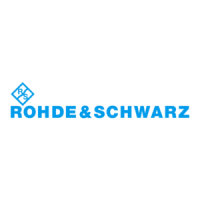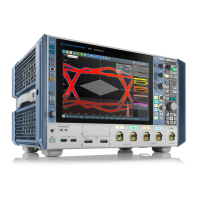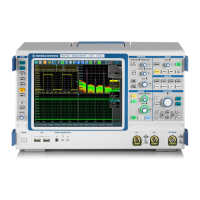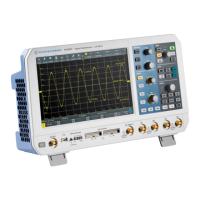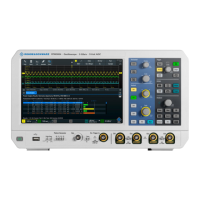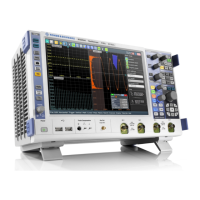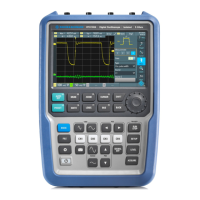Protocol analysis
R&S
®
RTE
521User Manual 1326.1032.02 ─ 20
13.1.5 Bit pattern editor
If you want to enter a specified address or data pattern, the bit pattern editor helps you
to enter the pattern in various formats - decimal, hexadecimal, octal, binary and ASCII.
The editor displays the pattern in two columns. The left column always shows binary
data. For the right column, you can select the format, the default depends on the data
specifics. You can edit data in the left or right column. The keypad adapts itself to the
column format, only keys appropriate to the format are enabled.
The data is grouped and converted in bit groups. The size of a bit group depends on
the address or data specifics and is set by the instrument. Groups are automatically
separated by blanks. The maximum size of a bit group is 64 bit, the most common
group size is 1 byte.
"Overwrite mode": If disabled, the data behind the new digit is shifted to the right. Bit
groups are rearranged automatically.
Format-specific information:
●
Unsigned: Decimal data format without sign. It is available for I²C, SPI, UART,
CAN, LIN and FlexRay protocols. If you enter a decimal number that is too large for
the defined bit group, the number is truncated and a message appears. X (do not
care) in the decimal column sets all binary digits of the bit group to X.
●
Signed: Signed decimal format, available for audio protocols. The first bit repre-
sents the sign. You can use the 2's complement or 1's complement format.
●
Binary: 0, 1 and X (do not care) is allowed.
●
Hex: most common format in the right column.
●
Octal: Each digit represents 3 bit.
●
ASCII: In the ASCII column, "X" is the character X. The binary X (do not care) is
not allowed. If an X is included in the binary value in the left column, the ASCII col-
umn displays "§" to indicate that the value is not defined.
Basics of protocol analysis
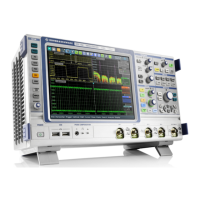
